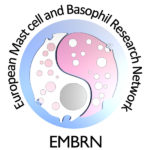Type I high affinity IgE receptor (FcεRI)
General Description The high affinity Immunoglobulin E receptor (FcεRI) is a tetrameric membrane protein complex (Fig. 1) expressed on mast cells and basophils (1), which belongs to the family of immunoreceptors involved in antigen recognition (2). It is composed of one α subunit containing one
